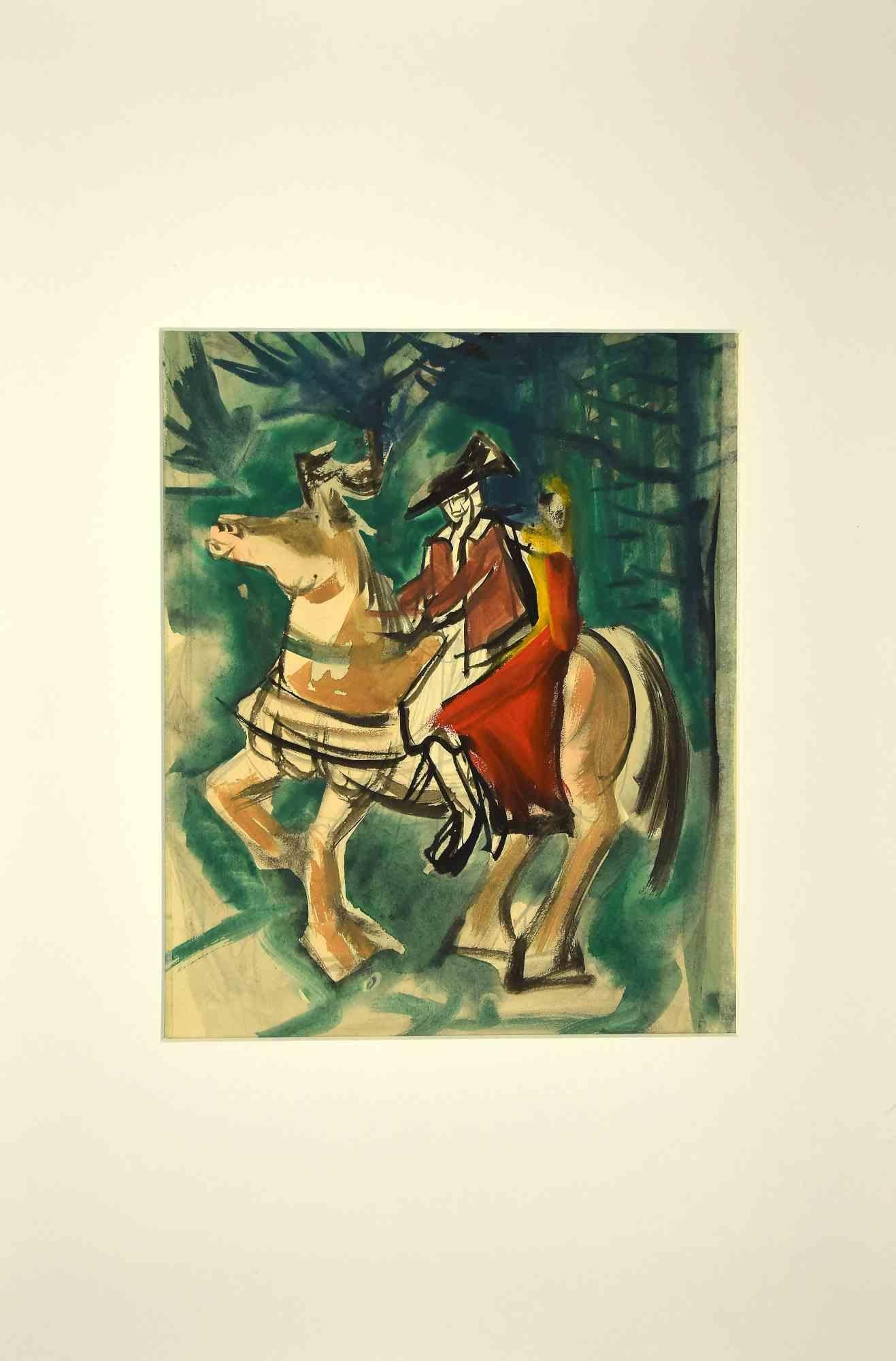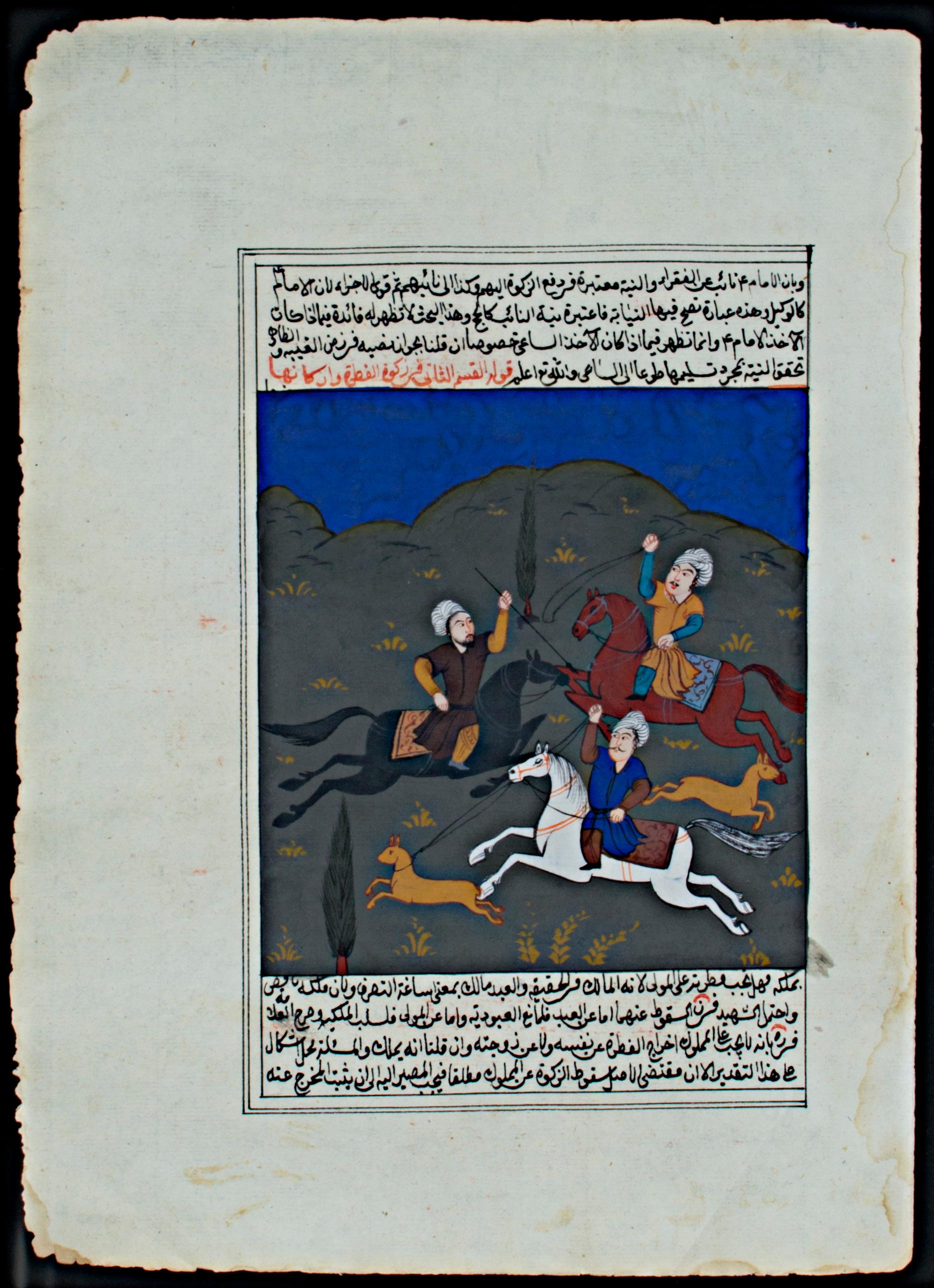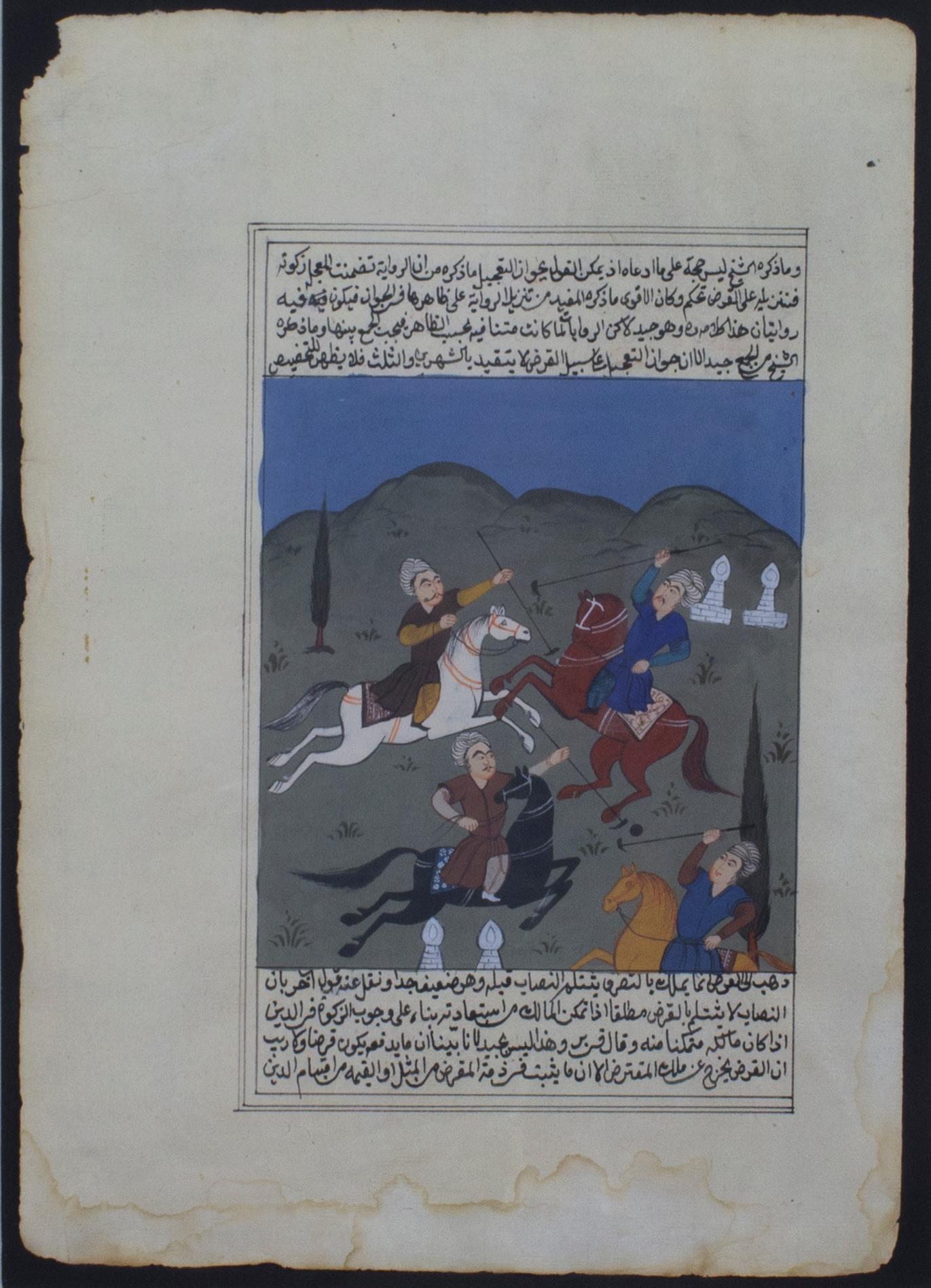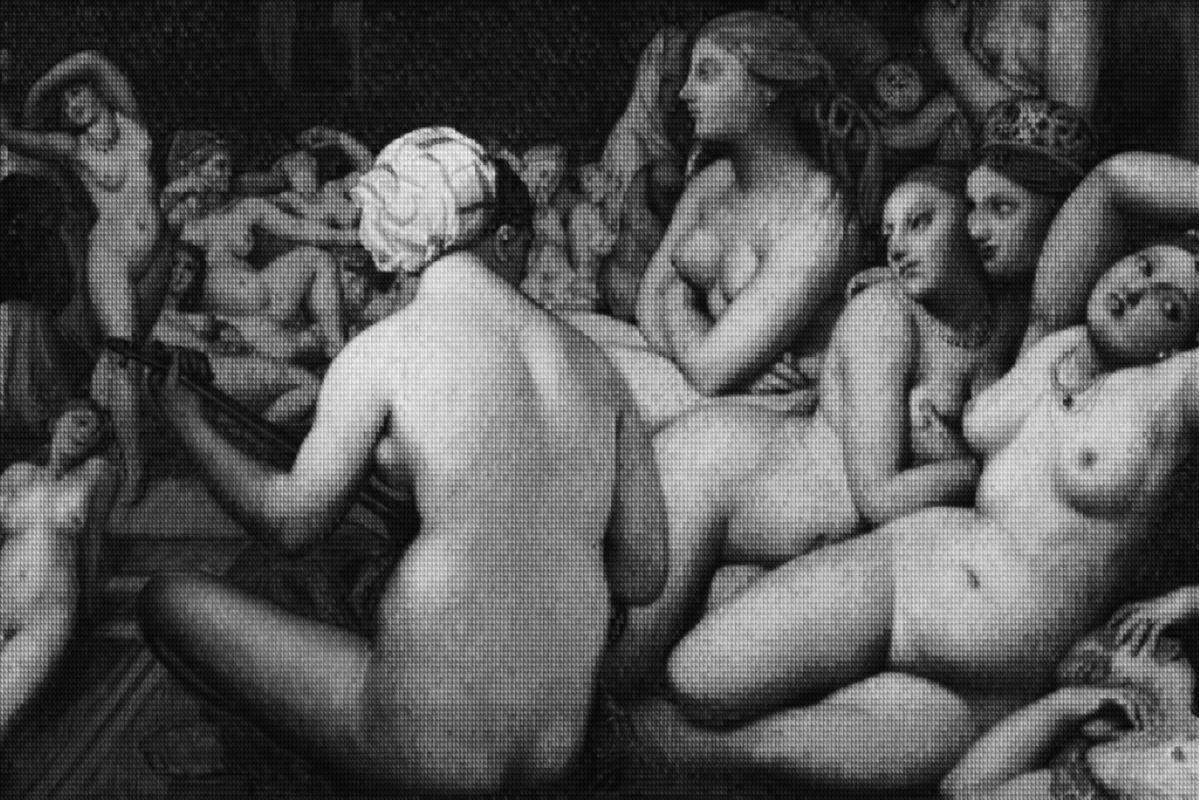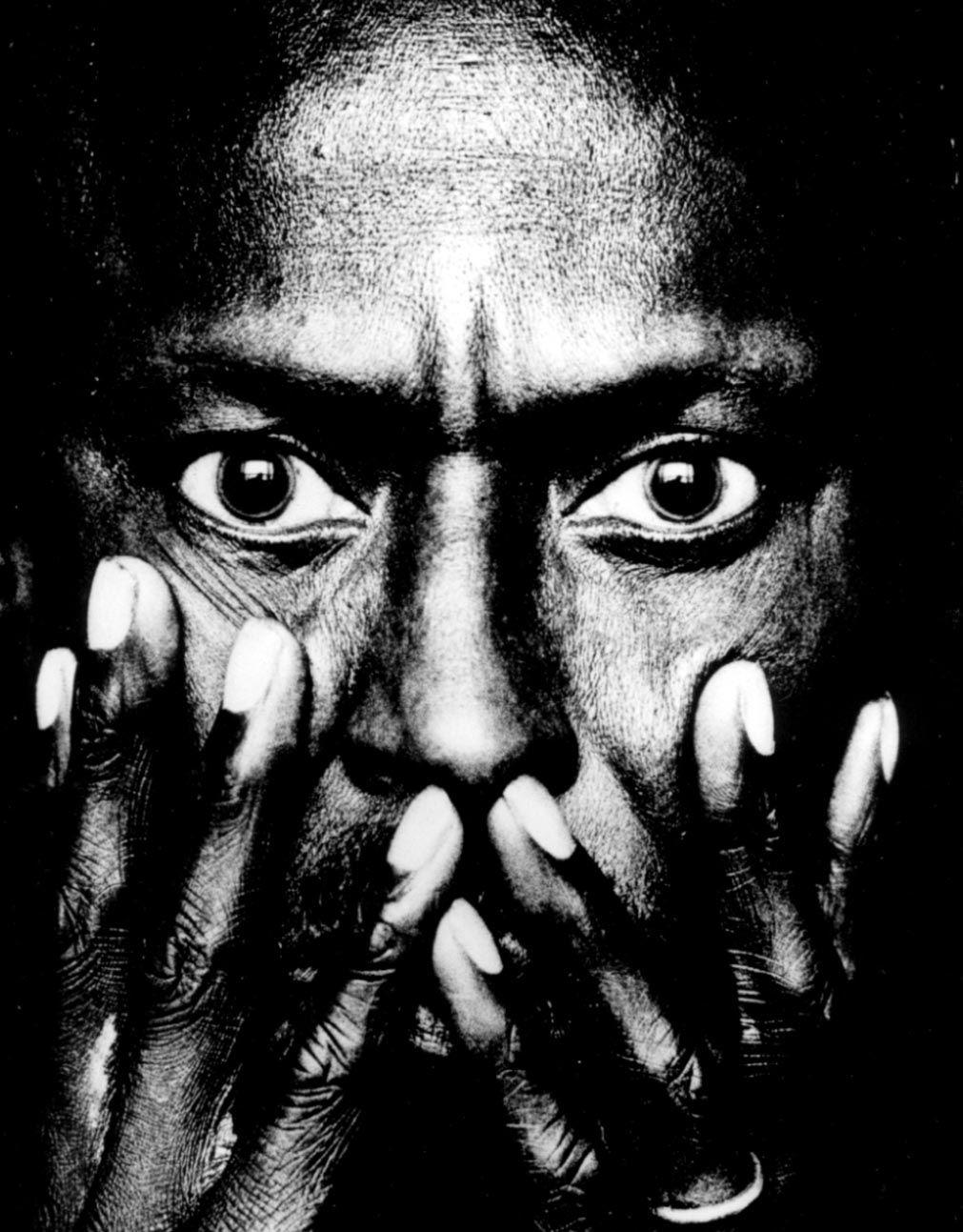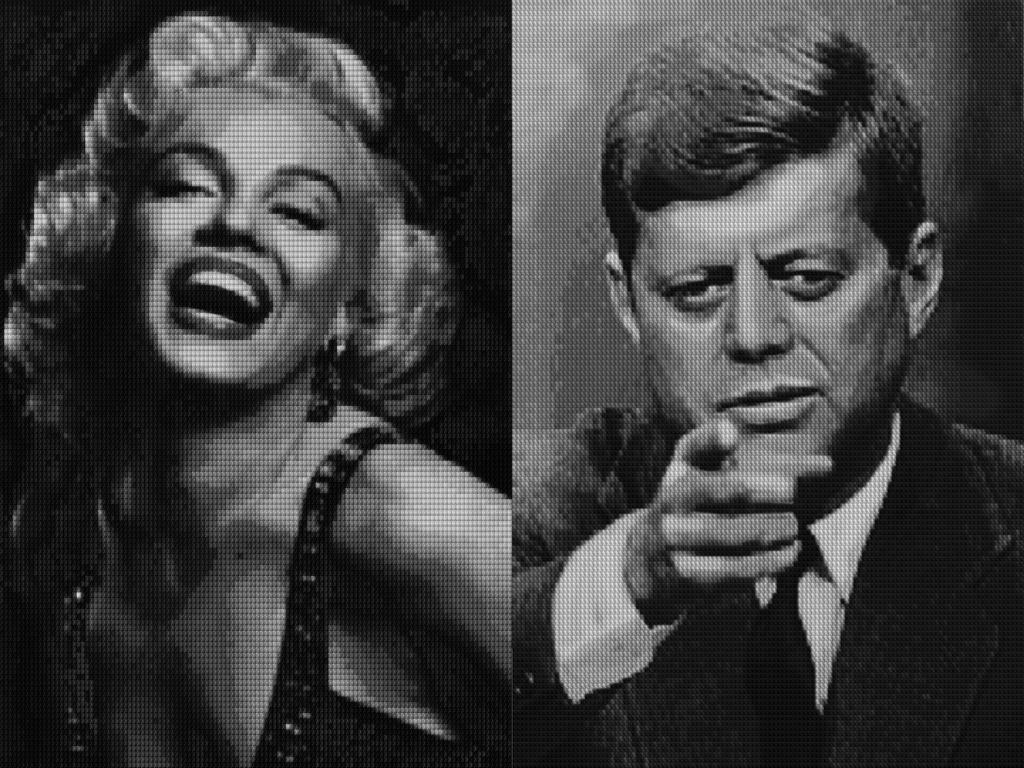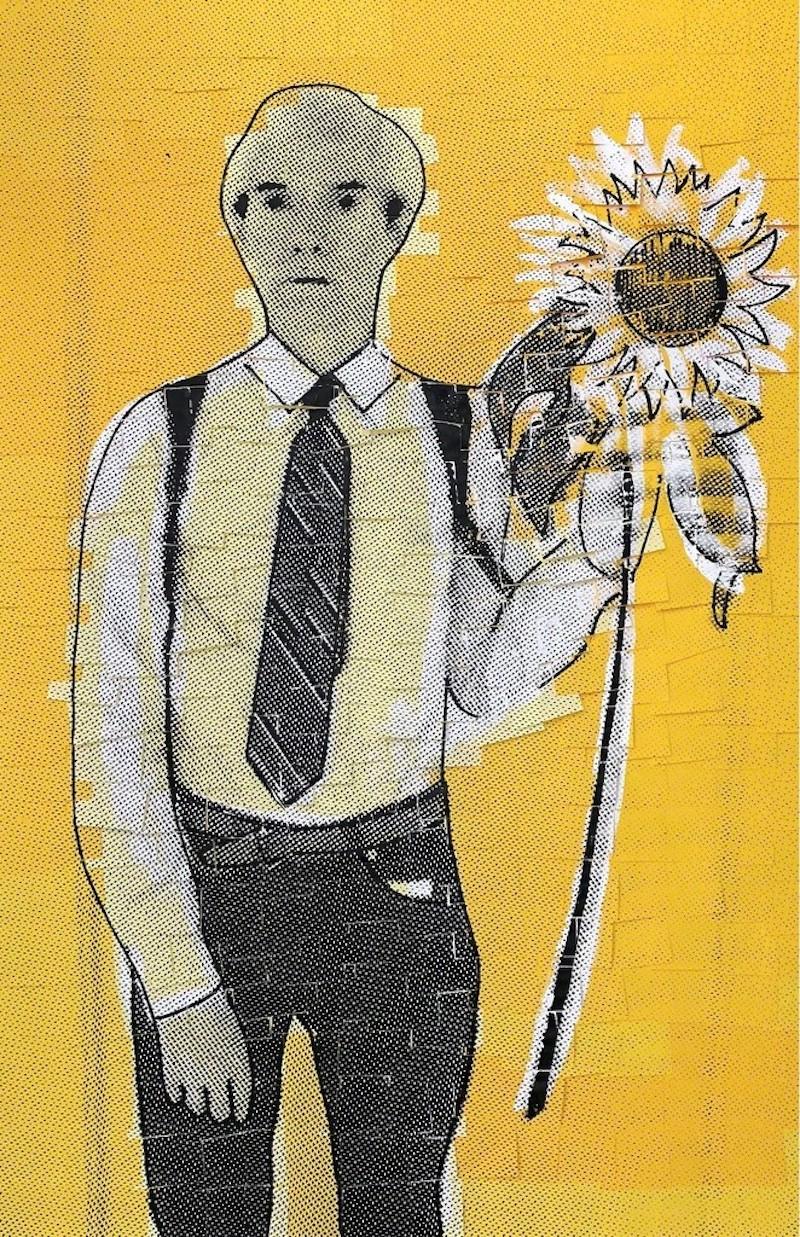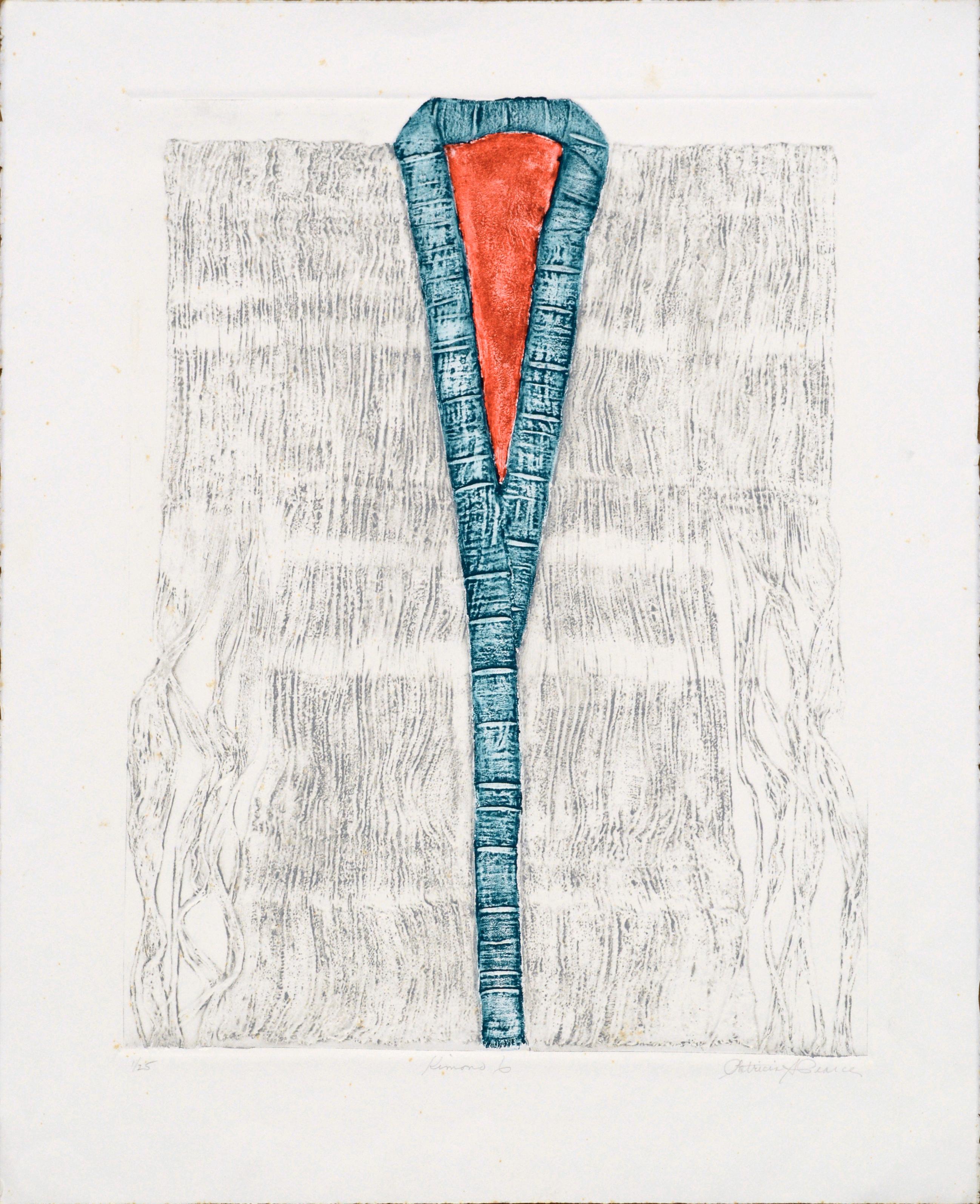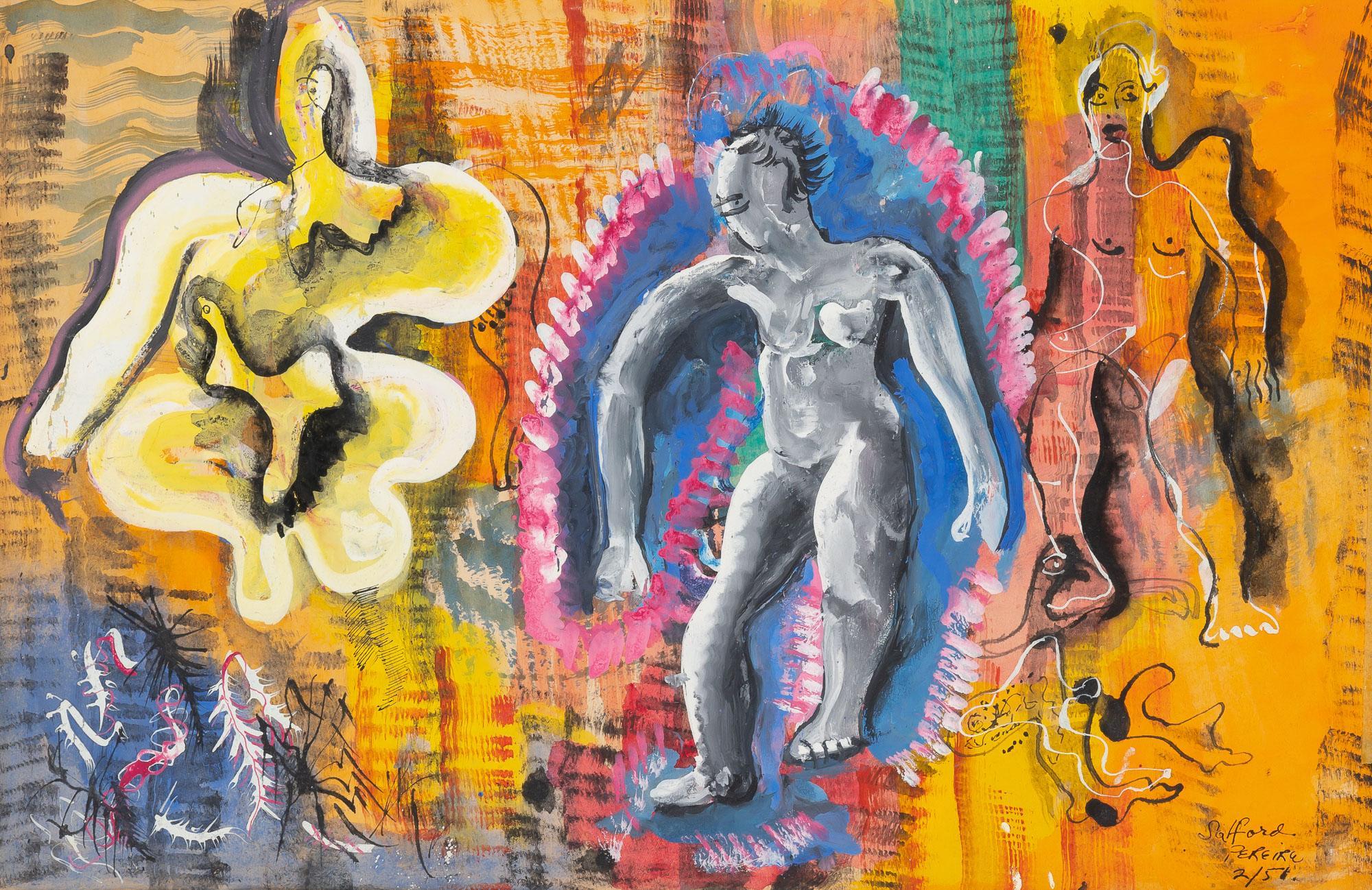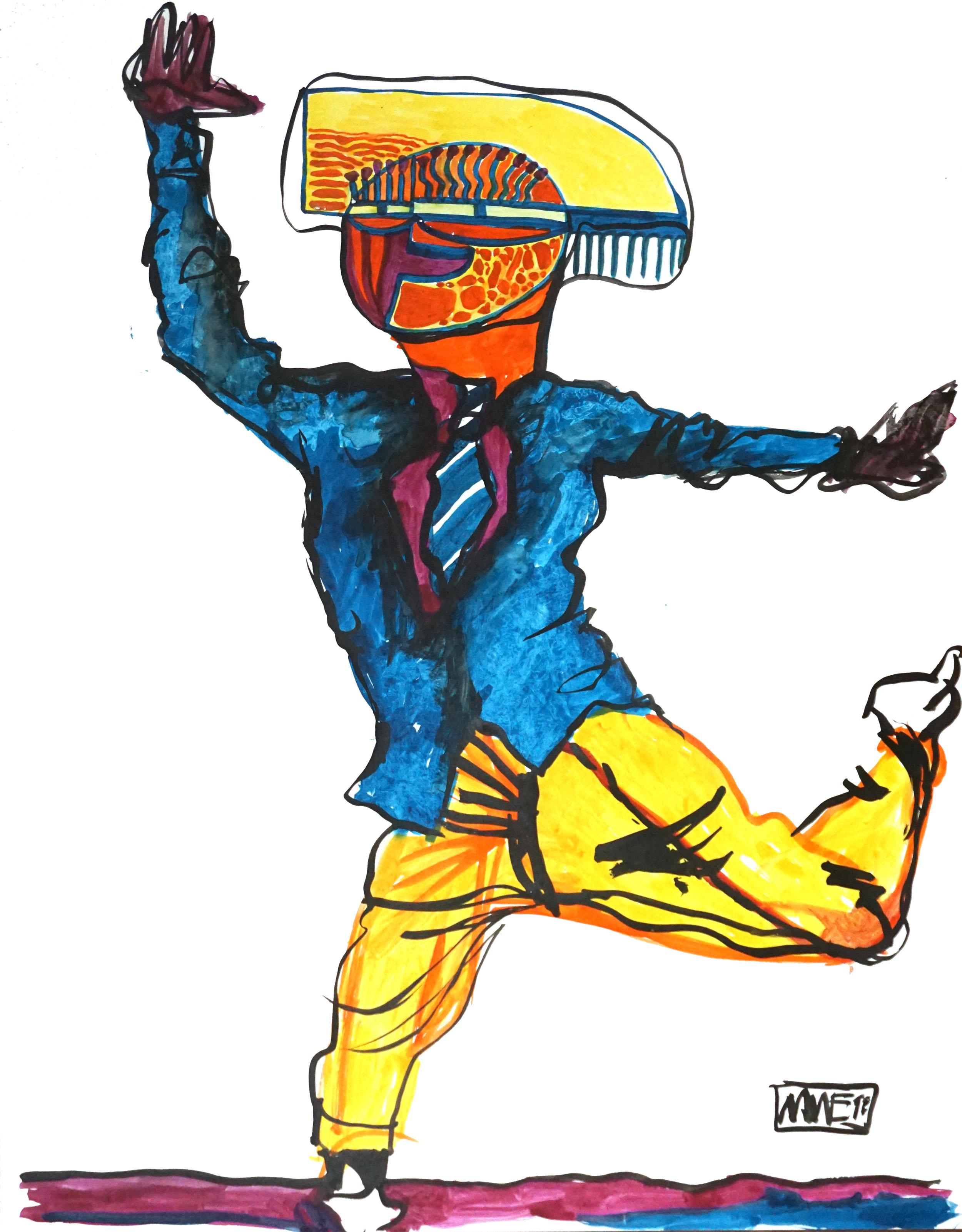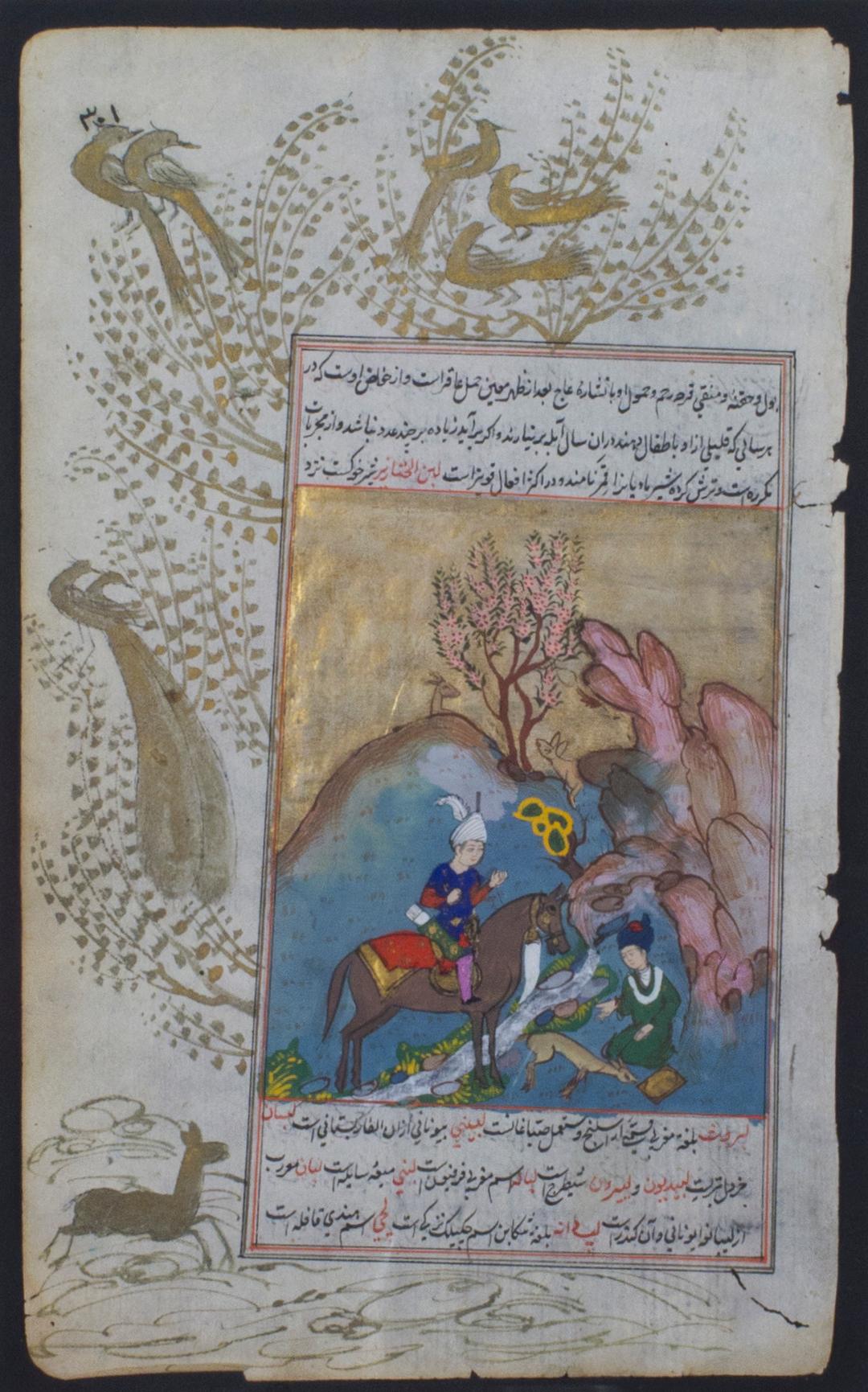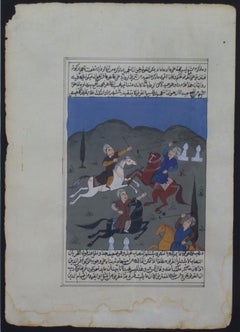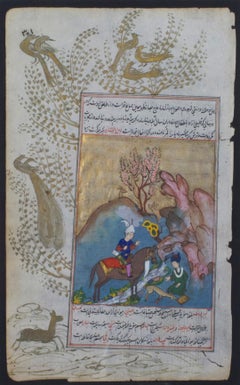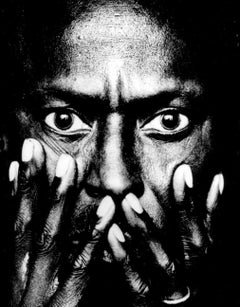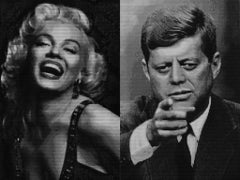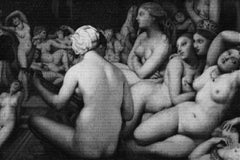
Persian Illuminated Miniature with Three Figures Playing Polo in a Landscape
View Similar Items
Want more images or videos?
Request additional images or videos from the seller
1 of 10
UnknownPersian Illuminated Miniature with Three Figures Playing Polo in a LandscapeLate 19th c.
Late 19th c.
About the Item
- Creation Year:Late 19th c.
- Dimensions:Height: 18 in (45.72 cm)Width: 14 in (35.56 cm)
- Medium:
- Period:
- Condition:Some water damage along the bottom. See images.
- Gallery Location:Milwaukee, WI
- Reference Number:Seller: 2005d1stDibs: LU60535979572
About the Seller
4.9
Platinum Seller
These expertly vetted sellers are 1stDibs' most experienced sellers and are rated highest by our customers.
Established in 1966
1stDibs seller since 2017
390 sales on 1stDibs
Typical response time: 1 hour
More From This SellerView All
- Persian Illuminated Miniature with Three Hunters on Horseback in a LandscapeLocated in Milwaukee, WIThe present illuminated folio page contains a fine miniature depicting three figures hunting while on horseback, an image meant to accompany a historic epic. During the medieval period, hunting was an important pastime of male nobility throughout the Islamic world. The Quran itself explicitly endorses hunting and the use of animals to aid in capturing prey: "Lawful to you are foodstuffs that are good to eat and any game that, at your wish, is captured by beasts of prey which train as you do dogs, according to the method that Allah has taught you, after you have spoken the name of Allah over it." (Q 6:4) Muslim princes and nobles enjoyed the chase of the prey via horseback, using bow and arrow, crossbows, and blowpipes to capture their prey Horseback riding itself trained young men in the necessary skills for armed combat and warfare, developing their speed and strength. 12 x 8.25 inches, artwork 19.75 x 15.88 inches, frame accompanied on the back with an image of the verso framed to conservation standards with a 100% rag silk-lined mat in a gold gilded frame A Persian miniature is a small Persian painting on paper, whether a book illustration or a separate work of art intended to be kept in an album of such works called a muraqqa. The techniques are broadly comparable to the Western and Byzantine traditions of miniatures in illuminated manuscripts. Although there is an equally well-established Persian tradition of wall-painting, the survival rate and state of preservation of miniatures is better, and miniatures are much the best-known form of Persian painting in the West, and many of the most important examples are in Western, or Turkish, museums. Miniature painting became a significant genre in Persian art in the 13th century, receiving Chinese influence after the Mongol conquests, and the highest point in the tradition was reached in the 15th and 16th centuries. The tradition continued, under some Western influence, after this, and has many modern exponents. The Persian miniature was the dominant influence on other Islamic miniature traditions, principally the Ottoman miniature...Category
19th Century Other Art Style Figurative Paintings
MaterialsInk, Tempera, Laid Paper
- Persian Illuminated Miniature with Four Figures Playing Polo in a LandscapeLocated in Milwaukee, WIThe present illuminated folio page contains a fine miniature depicting four figures playing polo. Polo, also called 'chagun,' was the sport of kings and princes of central Asia and Iran, and the sport probably originated there in the 6th century BCE. Polo matches appear in a large number of early Persian texts, including in the writings of the 10th century epic writer Abu l-Qasim al-Firdawsi: He describes numerous polo matches in his famous 'Shahnameh' (The Persian Book of Kings). This particular illumination also is closely related to an example held at the Smithsonian Museum of Asian Art: a folio from 'Guy u Chawgan' (The ball and the polo-mallet) which shows a polo game with the dervish and the shah. 12 x 8.25 inches, artwork 19.75 x 15.88 inches, frame accompanied on the back with an image of the verso framed to conservation standards with a 100% rag silk-lined mat in a gold gilded frame A Persian miniature is a small Persian painting on paper, whether a book illustration or a separate work of art intended to be kept in an album of such works called a muraqqa. The techniques are broadly comparable to the Western and Byzantine traditions of miniatures in illuminated manuscripts. Although there is an equally well-established Persian tradition of wall-painting, the survival rate and state of preservation of miniatures is better, and miniatures are much the best-known form of Persian painting in the West, and many of the most important examples are in Western, or Turkish, museums. Miniature painting became a significant genre in Persian art in the 13th century, receiving Chinese influence after the Mongol conquests, and the highest point in the tradition was reached in the 15th and 16th centuries. The tradition continued, under some Western influence, after this, and has many modern exponents. The Persian miniature was the dominant influence on other Islamic miniature traditions, principally the Ottoman miniature...Category
19th Century Other Art Style Figurative Paintings
MaterialsInk, Tempera, Laid Paper
- Persian Illuminated Miniature with Two Figures Hunting in a LandscapeLocated in Milwaukee, WIThe present illuminated page was once part of a larger manuscript, as evidenced by the tears along the right edge, illustrating a story from the Islamic world. The scene presents two figures in a landscape, one on horseback and another gesturing to a fallen deer. The stylization of the landscape shows influence from the Byzantine tradition of painting, with jagged rocks jutting into a golden sky. The page contains handwritten text on both sides, and is surrounded by gold illustrations of peacocks and a running deer. 11 x 6.5 inches, artwork 18.63 x 14 inches, frame accompanied on the back with an image of the verso framed to conservation standards with a 100% rag silk-lined mat in a gold gilded frame A Persian miniature is a small Persian painting on paper, whether a book illustration or a separate work of art intended to be kept in an album of such works called a muraqqa. The techniques are broadly comparable to the Western and Byzantine traditions of miniatures in illuminated manuscripts. Although there is an equally well-established Persian tradition of wall-painting, the survival rate and state of preservation of miniatures is better, and miniatures are much the best-known form of Persian painting in the West, and many of the most important examples are in Western, or Turkish, museums. Miniature painting became a significant genre in Persian art in the 13th century, receiving Chinese influence after the Mongol conquests, and the highest point in the tradition was reached in the 15th and 16th centuries. The tradition continued, under some Western influence, after this, and has many modern exponents. The Persian miniature was the dominant influence on other Islamic miniature traditions, principally the Ottoman miniature...Category
19th Century Other Art Style Figurative Paintings
MaterialsGold Leaf
- "Rice Harvest, " Tempera on Canvas signed by Indonesian artist KelishiLocated in Milwaukee, WI"Rice Harvest" is an original tempera painting on canvas by an Indonesian artist. The signature may be "Kelishi" "M.D." or something similar and can ...Category
Early 20th Century Folk Art Figurative Paintings
MaterialsCanvas, Tempera
- "Indian Pow-Wow, " Original Tempera Painting signed by David BarnettBy David BarnettLocated in Milwaukee, WI"Indian Pow-Wow" is an original painting in tempera, signed in the lower right. It features gestural blue outlines, decorated in shades of yellow, blue, and green. Art size: 24" x 1...Category
1960s Contemporary Figurative Paintings
MaterialsTempera
- Kees Van Dongen Circus Performers 1900s Vintage Vibrant Figure Fauvist SignedBy Kees van DongenLocated in Milwaukee, WI"Les Artistes du Cirque" is an original painting in ink, watercolor, and gouache on paper by leading Fauvist artist Kees Van Dongen, signed in the lower right. In the piece, two circus performers stand against against a wall. On the left, a pale woman in a blue leotard with red flowers on the shoulder stands with her arms crossed, looking out at the viewer. The painter fills in her tights with delicate white brushstrokes, lending them an almost iridescent appearance. Her strawberry blond hair is piled on top of her hair according to the fashion of the period. On the right, an African man stands in a vivid orange toga, looking somewhere off to the left. His feet are clad in bright white shoes...Category
Early 1900s Fauvist Figurative Paintings
MaterialsPaper, Ink, Watercolor, Gouache
You May Also Like
- Miles DavisBy Alex Guofeng CaoLocated in New York, NYIn a captivating new collection, Alex Guofeng Cao dazzles audiences with his unique twist on instantly recognizable images. Inspired by history and pop culture, Cao manipulates one i...Category
2010s Portrait Paintings
MaterialsMirror, Plexiglass, Ink, Acrylic, Archival Paper, Laid Paper
Price Upon Request - Marilyn vs JFK & JFK vs MarilynBy Alex Guofeng CaoLocated in New York, NYIn a captivating new collection, Alex Guofeng Cao dazzles audiences with his unique twist on instantly recognizable images. Inspired by history and pop culture, Cao manipulates one iconic image to create another in his extraordinary large-scale works. From a distance, the pieces appear to be a singular image but as the viewer approaches closer, you find each work is a masterfully crafted compilation of minute detailed images layered next to one another, creating a mesmerizing and hypnotic optical illusion. Cao meticulously places each smaller image to form a dynamic gradient from dark to light which tricks the eye into seeing one image. This expertise in contrast is exemplified in all of his works, from striking black and white pieces to stunning explorations in high-definition color. He cleverly mirrors this visual contrast in his subject matter by subverting the main image and creating a dialogue between the macrocosm and microcosm. Take the piece, Ali vs Armstrong; here we see the iconic image of Muhammed Ali’s victory composed of thousands of tiny portraits...Category
Early 2000s Contemporary Portrait Paintings
MaterialsStainless Steel
- Turkish Bath vs Grand Odalisque, After IngresBy Alex Guofeng CaoLocated in New York, NYIn a captivating new collection, Alex Guofeng Cao dazzles audiences with his unique twist on instantly recognizable images. Inspired by history and pop culture, Cao manipulates one i...Category
2010s Contemporary Nude Paintings
MaterialsPlexiglass, Ink, Acrylic, Laid Paper, Mirror
Price Upon Request - Andy vs Ardan Yellow (post it notes)Located in New York, NYWith the distinctive medium of post-it notes, Özmenoğlu re-contextualizes everyday objects from something ordinary to a beautiful work of art. The individualized behavior of each pos...Category
2010s Contemporary Figurative Paintings
MaterialsArchival Pigment, Paper, Laid Paper, Screen, Archival Ink, Mixed Media, ...
Price Upon Request - "Kimono 6" (Blue and Red)By Patricia A. PearceLocated in Soquel, CABold, embossed kimono by Patricia A. Pearce (American, b. 1948). Numbered, titled, and signed along bottom edge ("1/25 Kimono 6 Patricia A Pearce"). No frame. Patricia Pearce ...Category
1980s Contemporary Abstract Prints
MaterialsPaper, Ink, Laid Paper, Gouache
- "Composition with Figure, " Irene Rice PereiraBy Irene Rice PereiraLocated in New York, NYIrene Rice Pereira Composition with Figure, 1951 Inscribed, signed and dated Salford/Pereira 2/51 (lr); inscribed I Rice Pereira/2669 Great Clowes St/Sa...Category
1950s Abstract Abstract Paintings
MaterialsPaper, India Ink, Casein
Recently Viewed
View AllMore Ways To Browse
Persian Painting On Silk
Islamic Figurative Paintings
Antique Illuminated Manuscript
Persian Manuscript
Islamic Ottoman Silk
Polo Match
Islamic Wall Panel
15th Century Religious Paintings
Polo Book
Indian Mughal Painting
Small Persian Mat
Antique Indian Miniature Painting
Byzantine Royal
Antique Indian Miniature Paintings
Antique Chinese Painting On Silk Panel
Antique Persian Miniature Painting
Persian Tempera
Antique Indian Silk Painting
